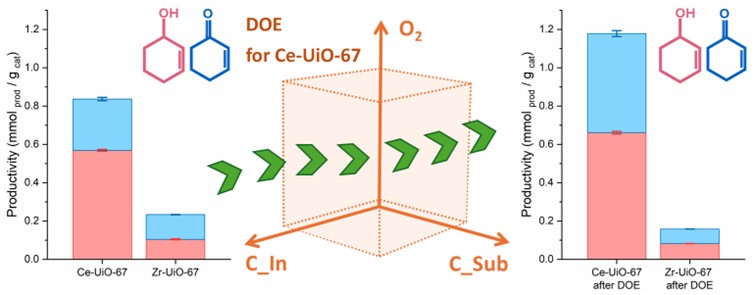Applied Catalysis A: General – Valeria Finelli, Federico Panagini, Reza K. Abasabadi, Francesca Rosso, Barbara Centrella, Matteo Signorile, Silvia Bordiga

Cyclohexene allylic partial oxidation is currently a relevant reaction yielding 2-cyclohexenol and 2-cyclohexenone, that are widely used intermediates in chemical industry. The reaction is presently performed in an uncatalyzed way and, due to the radical mechanism, the control on products selectivity and overall conversion is not optimal. In this contribution, we attempted to shift cyclohexene oxidation toward a heterogeneous catalytic process, by investigating the potential of Ce-based metal-organic frameworks as catalysts. This class of materials demonstrated promising performances in oxidation catalysis, and we focus herein on the prototypical UiO-67 framework. As an initial screening, we investigated the effect of reaction compositional variables (namely initiator and substrate amount) and oxygen partial pressure in the gas-phase on the performances under very mild conditions (room temperature and pressure). To consistently perform the assessment over this variables space, we took advantage of a Design of Experiments chemometric approach. This allowed us to significantly improve the reaction performances (ca. 50% increase in overall productivity with respect to not optimized conditions from literature) by performing only a subset of all possible combinations in the variables space. This contribution represents a first step toward a rational development of a catalytic process for cyclohexene allylic oxidation, based on a robust statistical approach that will be extended in the future to the investigation of other reaction parameters.
Click here for the complete article!